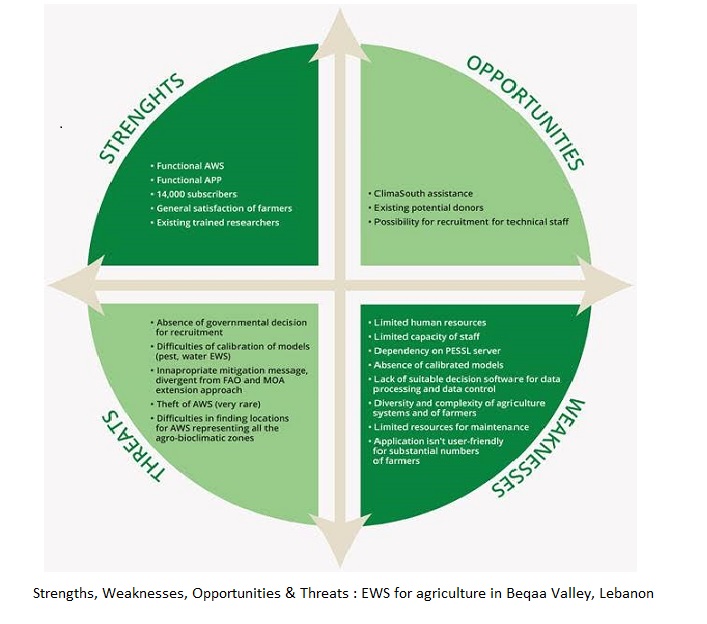Early warning system to help farmers in the Beqaa valley, Lebanon

A project proposal has been presented to enhance the agricultural Early Warning System (EWS) in the Beqaa valley, Lebanon. The proposal is based on a comprehensive needs assessment, previously conducted by the Lebanese Agriculture Research Institute (LARI), in collaboration with the Lebanese Ministry of Environment and the EU funded ClimaSouth project. The objective is to improve agrometeorological monitoring to help attenuate damage caused by destructive climatic conditions and thereby increase farmers’ incomes. With a total budget of € 2,84 million, the project proposal is currently being presented to potential donors in order to secure funding.
The projected economic impact of climate change on Lebanese agriculture is anticipated to be severe. Due to the changes in climate currently predicted, the value of farm production may fall by about USD 80 million by 2020, hitting the country’s strategic crops, namely cereals, fruit trees, olives, sugar beet, tobacco and potatoes. Over the last years, irrigation practices have intensified and irrigated land is increasing due to need to satisfy the additional food requirements caused by the Syrian conflict.
The proposed upgrade of the EWS will provide registered users with alerts and advice on the most efficient irrigation options. It will also offer users dedicated farm services on a contractual basis. The existing EWS already supports farmers in managing the impacts of climate variability on their activities, by sharing meteorological information via SMS, smartphone and web-based applications. Subscribers to these service are currently about 14,000. The upgraded EWS will target 35,000 farms in the Beqaa valley, benefitting around 300,000 inhabitants, as well as farmers’ associations and agricultural extension services.
The anticipated outcome will be to increase water use efficiency while reducing the wastege of water, nutrients and energy. New EWS infrastructure will support the flow of information, based on an improved agrometeorological observation network and streamlined procedures to acquire weather forecasts from international providers. This will be complemented by the adoption of drought and water management protocols at different scales: district/provincial level, agroecological zone, and farm/plot level.
Resources: Needs Assessment | Project proposal | EWS training resources



